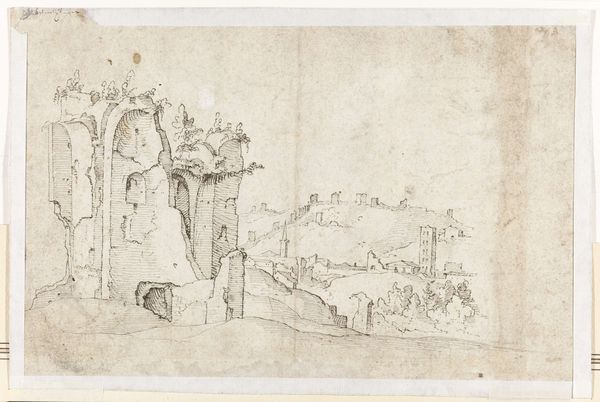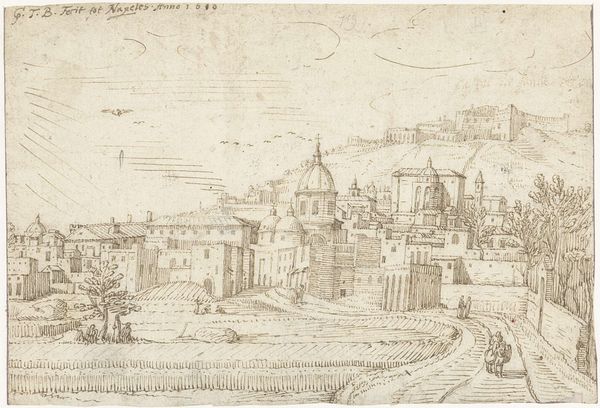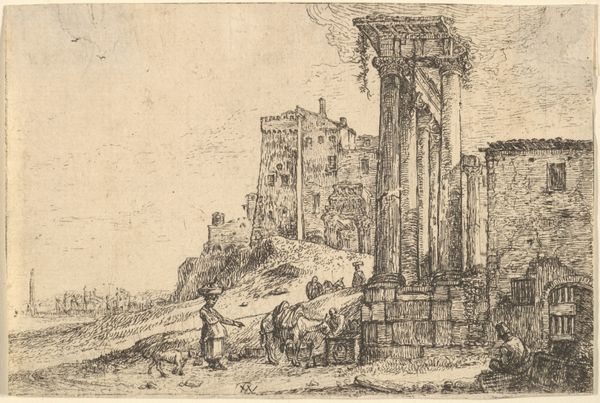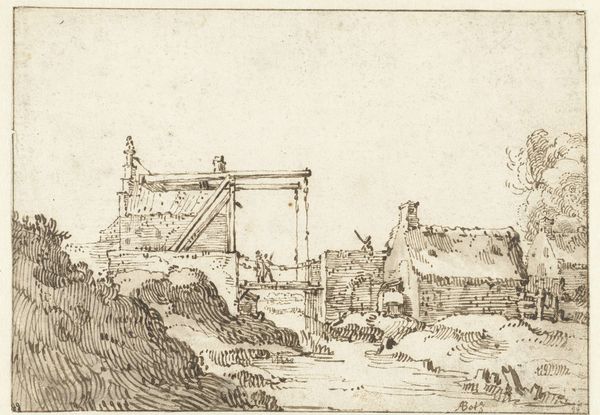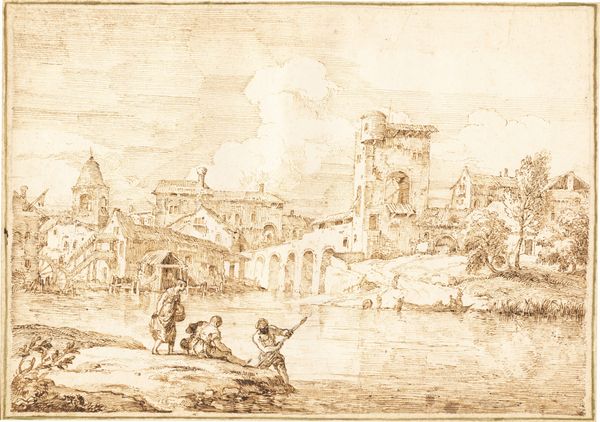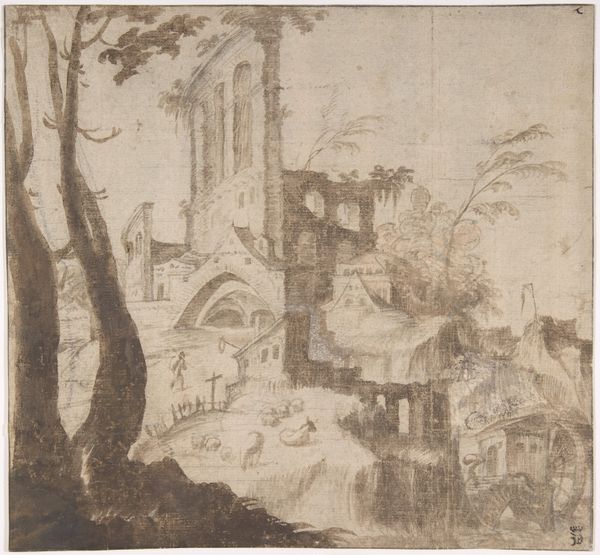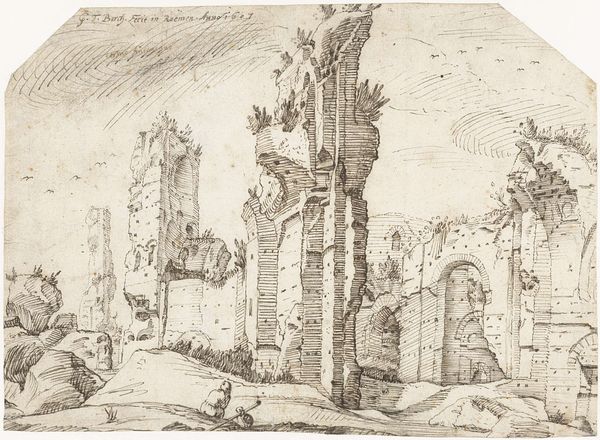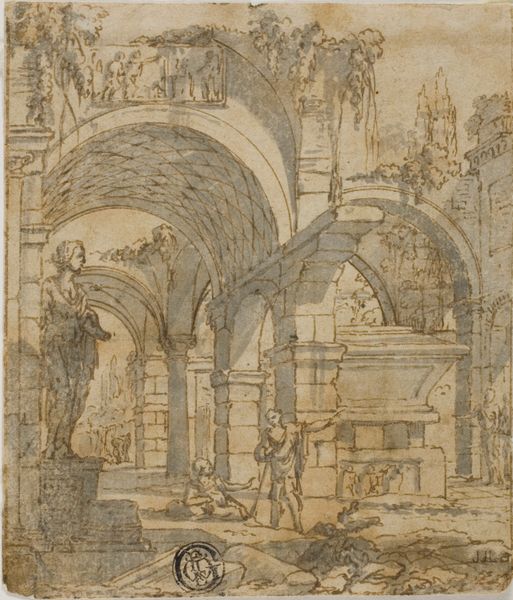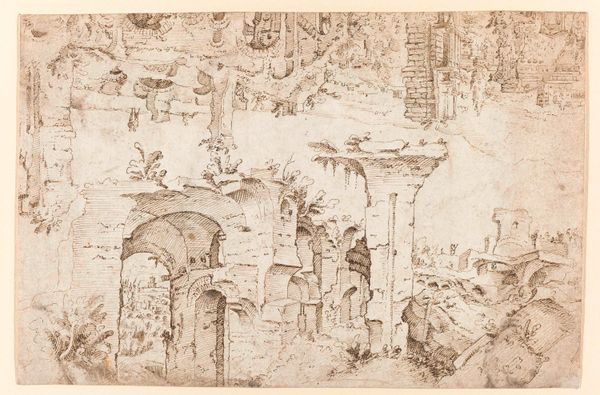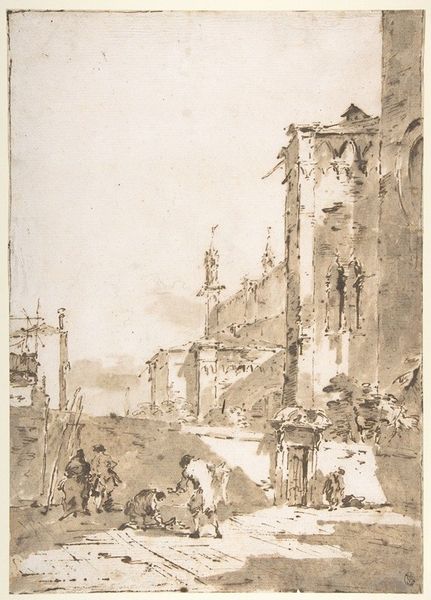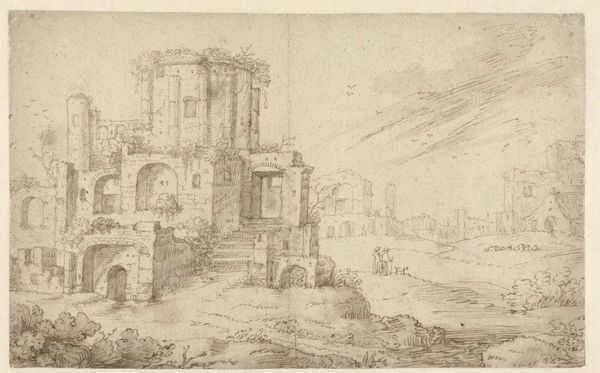
View of the apse of the Temple of Venus and Roma and the convent of S. Maria Nova, Rome 1609
0:00
0:00
drawing, ink, pen, architecture
#
drawing
#
baroque
#
etching
#
perspective
#
ink
#
pen-ink sketch
#
pen
#
cityscape
#
architecture
Dimensions: height 170 mm, width 270 mm
Copyright: Rijks Museum: Open Domain
Editor: This pen and ink drawing, "View of the apse of the Temple of Venus and Roma and the convent of S. Maria Nova, Rome" from 1609 by Gerard ter Borch, is captivating. There's such a delicate quality to the lines, but it also manages to convey the monumentality of the architecture. How does this image speak to you? Curator: What strikes me is the complex relationship between decay and continuity that this drawing represents. Borch is capturing Rome at a moment of self-conscious historicism, when the ruins of antiquity were both celebrated and incorporated into the evolving fabric of the city. The Temple of Venus and Roma, in its dilapidated state, stands adjacent to a functioning convent. Editor: That’s a fascinating point. It’s almost like the drawing itself is enacting a kind of historical palimpsest. Curator: Exactly! Consider the socio-political implications. The Church, in its ascendancy, literally and figuratively builds upon the foundations of the Roman Empire. Artists like Borch, commissioned or drawn to capture these scenes, participate in the visual construction of this new order. Notice also the emphasis on perspective – it creates a visual hierarchy, drawing the eye toward the Roman ruins, but also acknowledging their integration into the contemporary urban landscape. Editor: So it's not just a pretty picture; it's a statement about power and the legacy of Rome? Curator: Precisely. Art wasn’t separate from social forces. The patronage, the subject matter, the very act of depicting these scenes served to legitimize and reinforce the prevailing power structures. This drawing highlights how visual culture plays an active role in shaping historical narratives and collective memory. What was initially considered aesthetically attractive becomes politically revealing! Editor: I never thought of it that way! Seeing it as a negotiation between past and present really reframes my understanding of early cityscape drawings. Curator: It enriches it, certainly. And that is what close-looking is all about.
Comments
No comments
Be the first to comment and join the conversation on the ultimate creative platform.
